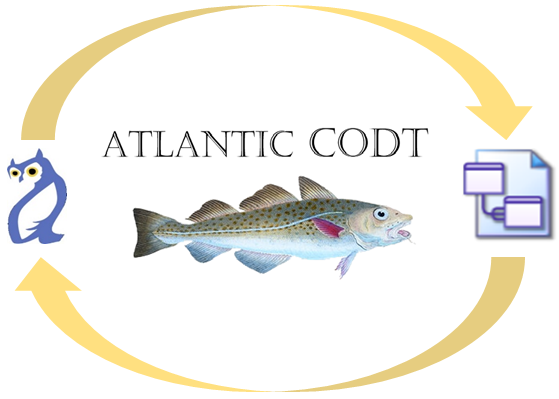
The U.S. Patent and Trademark Office (USPTO) has issued U.S. Patent No. 12,038,939 for the Configurable Ontology to Data Model Transformation (CODT).
CODT is the technology that generated the FIBO Data Model from the industry-standard ontology. Over three thousand users have downloaded the open-source version of the Financial Industry Business Data Model (FIB-DM).
What is novel and superior?
The groundbreaking and broad patent awarded means that Jayzed Data Models Inc. has protected its intellectual property to
- Transform very large ontologies.
The Financial Industry Business Ontology (FIBO) source comprises 2,388 classes defined in 192 RDF/OWL files. The ontology-derived data model has 3,131 entities. (as of version Q1, 2025). - Master the higher semantics of Ontology Web Language (OWL), including inverse properties, sub-properties, and class restrictions.
- Configure transformation rules for naming standards.
- Fully harvest the extensive source ontology documentation. CODT transformed 13,757 FIBO annotation properties into entity definitions and extended attributes.
How does the invention achieve its results?
The novel approach applies ETL, Extract, Transform, and Load to the metadata challenge.
- CODT leverages SPARQL, the ontology query language, to extract the schema (rather than parsing files).
- The patented “Metadata Sets” for Ontology, Entity-Relationship layer, and target Data Modeling Tool facilitate set operations.
- Coupled with 4GL language, the Metadata Sets become self-populating.
Who benefits?
The patent protects FIB-DM open-source core users and licensees of the full model. As the patent grants:
35 U.S.C 154 (a)(2)
… and if the invention is a process of the right to exclude others from using, offering for sale, or selling throughout the United States of America, products made by that process …
CODT is a process, and data models are products made by that process.
Data Architects and Modelers who struggle to open the FIB-DM SAP PowerDesigner download in their modeling software can now import the FIBO Data Model entities, relationships, and documentation from MS Excel or CSV flat files.
The patent fully discloses and claims the structure of the Entity-Relationship Metadata Set. Hence, we can release the 23 fully populated MS Excel worksheets.

Large Financial Institutions with semantic centers of excellence (SCE) can
- transform their customized FIBO and other ontologies, leveraging the design for the rest of the organization.
- Reverse-engineer their data models into RDF/OWL, accelerating the development of enterprise or operational ontologies and the knowledge graph.
Resources and further reading
Data Architects and Modelers should watch CODT transform the FIBO into an MS PowerDesigner model. The YouTube video shows how to use the MS Excel embodiment.
Then, optionally, study the articles about Atlantic CODT and complex model transformations.
The Patent Specification teaches “a person skilled in the art” how to build the Metadata Sets in MS Excel or port CODT to your ETL or Software Development environment.
The user-friendly version has the patent drawings in color, embedded in the text, and without distracting numbers in the text and diagrams.
The Claims page provides context and links to the Specification drawings, tables, and paragraphs that cover claim parts and define Key Claim Terms.
The Drawings page is a gallery of patent FIG 1-23. On click, it opens the drawing in full-size resolution.
Lawyers should refer to the official USPTO website or Google Patents US12038939B2 publication.
The FAQ page answers common questions.